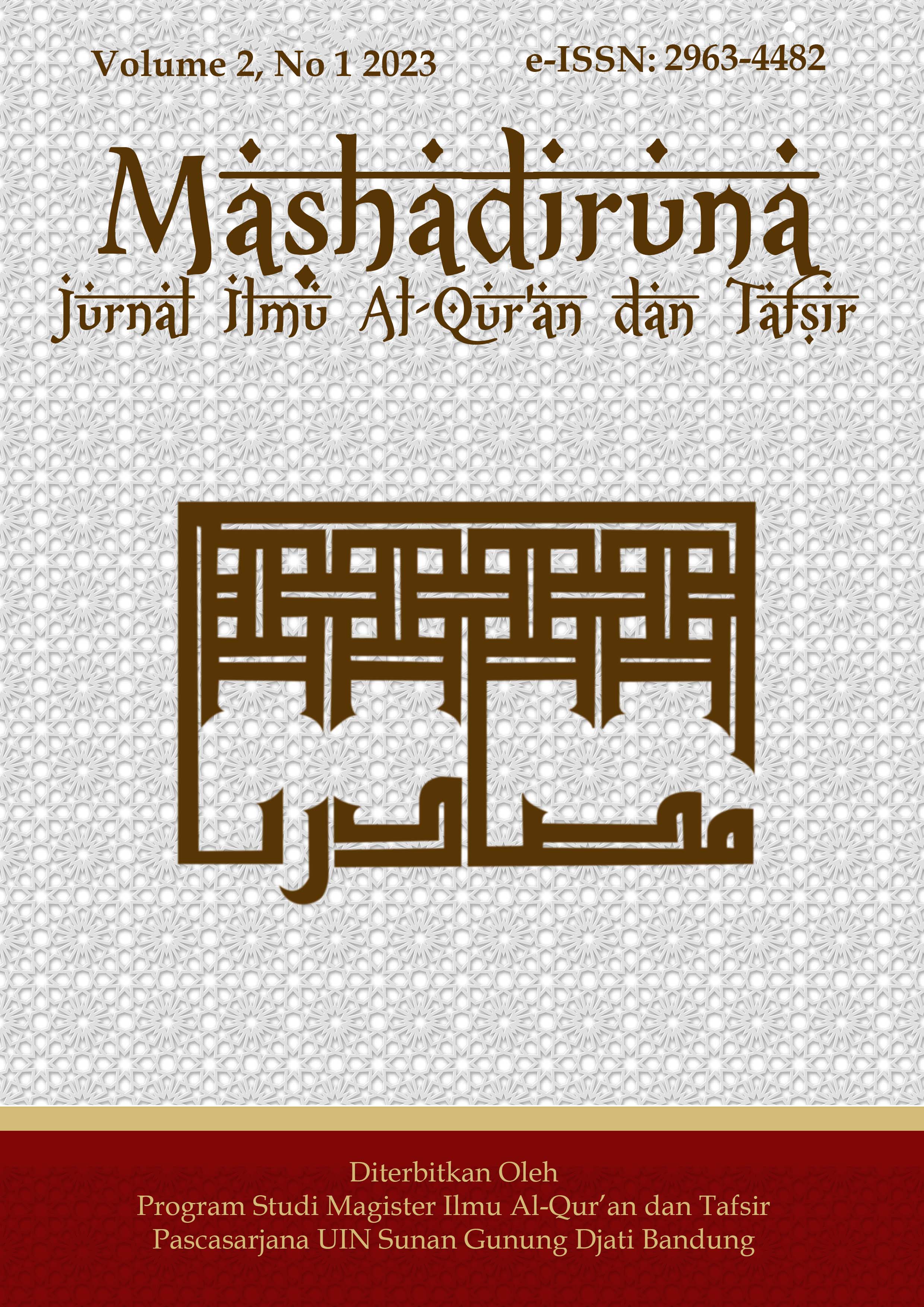Maqasidi Interpretation of Maysir Verses: Ethics and Regulation of Lootbox Video Games
DOI:
https://doi.org/10.15575/mjiat.v4i1.38111Keywords:
Gerakan dakwah, cinta Masjid, perilaku damai, apolitis, aktivitas MuslimAbstract
This paper discusses the interpretation of maqasidi on maysir verses and their relevance to the ethics and regulation of Lootbox video games. The methodology used in this study is the Descriptive Analysis method of Literature Study. Based on quotes from Islamic primary sources and pre-Islamic Arabic poetry, contextualization and reconstruction of betting practices in that period are carried out. Assets, people, and instruments used during gambling are determined, such as: ğuzūr, aysār, qidāḥ, rabāba, ĥurda, raqīb and the like. Propositions are explained by playing tens, twenty-eight and other types of gambling. The significance of maysir is shown, which is the basis for the stance of contemporary Islamic jurists on the (un)acceptability of current forms of games and entertainment. Understanding the path of gambling at that time helps to standardize modern gambling practices appropriately. The results of this study are that we can say that the Lootbox video game platform or system is a financial tool comparable to gambling, or more precisely, disguised gambling. This is because transactions on the Lootbox video game platform comply with the four criteria of gambling that have been established by scholars: there is a bettor, an asset at stake, a winner and a loser, and the winner has the right to the loser's asset.
References
Al-Mubarakfuri, S. S. (2019). Rahiq Makhtum. PTS Publishing House Sdn. Bhd.
Al-Qurtuby. (n.d.). Jami’ lil Ahkam al-Quran. Alqohiroh: darel kutub al- misyhiriyah.
Arni, J. (2011). Tafsir al-Tahrir wa al Tanwir Karya Muhammad Al-Thahrir ibn Asyur. Jurnal Ushuluddin, 17(1), 80–97.
As-Sayis, M. A. (1968). Tafsir Ayat Al Ahkam. Al Azhar University.
Ash-Shabuni, M. A. (1977). Tafsir Rawai‟ ul Bayan. Jawa Timur: Maktabah Al-Ghazaliyah Suriah.
Asy-Syatibi, A. I. (2007). al-Muwafaqat fi Ushul al-Syari’ah. Beirut: Dar AlKutub Al-Ilmiyyah.
Auda, J. (2008). Maqasid al-shariah: A beginner’s guide (Vol. 14). International Institute of Islamic Thought (IIIT).
Az-Zamakhsyari, A.-Q. bin U., & bin Umar, M. (2009). Tafsir Al-Kasyaf. Beirut: Darul Ma’rifah.
Baghawy, H. M. F. (1997). Ma’alimut Tanzîl. Al-Madinah Al-Munawwarah: Dâr Thayyibah, Cetakan Ke-4.
Firdausi, S. K. (2023). The Implementation of Maqasid Shariah in Zakat Studies. Islamic Social Finance, 3(2).
Ibn‘Asyur, M. T. (2008). Syarh Al-Muqaddimah Al-Adabiyah Li Al-Marzuqi Ala Diwan Al-Hamasah Li Abi Tamam. Riyad: Maktabah Dar Al-Minhaj.
Ibrahim, A. R. H. (1999). Al-Tajdid: min al-nass ‘ala al-khitab: bahth fi tarikhiyat al-mafhum al-tajdid. al-Tajdid, Vol. 3, No. 6. Kuala Lumpur: IIUM.
Kholid, S., & Tabligh, M. J. (n.d.). Majalah As-Sunnah. 2003, Edisi 01/Tahun VII Lihat juga Muhammad Yusuf Al-Kandahlawi Muntakhab Ahadist; Dalil-Dalil Pilihan Enam Sifat Utama,(terj) Ahmad Nur Khalis Al-Adib, Munjahid, 15. Sa’ad Bin Ibrahim Syilbi, Dalil-Dalil Da’wah Dan Tabligh,(Terjemahan Oleh Ust. Musthafa Sayani), 155.
Mandzur, I. (n.d.). Lisanul Arab. Beirut: Dar al-Sadr.
Mooi, E. A., & Gilliland, D. I. (2013). How contracts and enforcement explain transaction outcomes. International Journal of Research in Marketing, 30(4), 395–405.
Mubarok, M. F., & Barkia, Z. R. (2021). Metode Tafsir Maudhu’i (Tawhidi) dan Langkah-Langkah Menurut Pandangan Ayatullah Muhammad Baqir Shadr. In E. Zulaiha & M. T. Rahman (Eds.), Makna dan Manfaat Tafsir Maudhu’i (pp. 72–92). Bandung: Prodi S2 Studi Agama-Agama UIN Sunan Gunung Djati Bandung.
Paranoan, N. (2015). Riset Non Positivistik Akuntansi Dalam Tiga Paradigma: Interpretif, Kritis dan Posmodernisme. Jurnal Ilmiah Akuntansi Dan Bisnis, 10(1), 8–18.
Rachmat, K. d. (2010). Teknik Praktis: Riset Komunikasi. jakarta: kencana.
Rahmatullah, R. (2019). Menakar Hermeneutika Fusion of Horizons H.G. Gadamer dalam Pengembangan Tafsir Maqasid Alquran. Nun: Jurnal Studi Alquran Dan Tafsir Di Nusantara, 3(2), 149–168. https://doi.org/10.32495/nun.v3i2.47
RI, D. A. (2010). al-Qur’an dan Tafsirnya. Jakarta: Lentera Abadi.
Silverman, D. (2015). Interpreting Qualitative Data. Los Angeles, London, New Delhi, Singapore, Washington DC: Sage Publications.
Sjahdeini, S. R., & Syariah, P. (2014). Produk-produk dan Aspek-aspek Hukumnya. Jakarta: Kencana Prenada Media.
Stemler, S. E. (2015). Content analysis. Emerging Trends in the Social and Behavioral Sciences: An Interdisciplinary, Searchable, and Linkable Resource, 1–14.
Wijaya, A., & Muzammil, S. (2021). Maqāṣidi Tafsir: Uncovering and Presenting Maqāṣid Ilāhī-Qur’anī into Contemporary Context. Al-Jami’ah: Journal of Islamic Studies, 59(2), 449–478.
Wilson, J. A. J. (2018). Halal branding. Claritas Books.
Zaid, W. A. A., & Asyur, W. (2013). Al-Tafsir al-Maqasidi Lisuar al-Quran al-Karim. Mekah: Alukah.
Zayd, Wasfi‘Asyur Abu. (n.d.). Nahwa Al-Tafsir al-Maqasidi li Al-Qur’an Al-Karim Ru’yah Ta’sisiyyah li Manhaj Jadid Fi Tafsir Al-Qur’an. Terj. Ulya Fikriyati, Metode Tafsir Maqasidi.
Zayd, Waṣfī’Āsyūr Abū. (2019). Nahwa Tafsīr Maqāṣidī Li Al-Qurān Al-Karīm: Ru’yah Ta’sīsiyah Li Manhaj Jadīd fī Tafsīr. Kairo: Mofakroun.
Zein, M. F. (2019). Anak dan Keluarga dalam Teknologi Informasi. Mohamad Fadhilah Zein.
Downloads
Published
Issue
Section
License
Copyright (c) 2025 Muhammad Iqbal Fauzi, Badruzzaman M. Yunus

This work is licensed under a Creative Commons Attribution-ShareAlike 4.0 International License.
Authors who publish with this journal agree to the following terms:
- Authors retain copyright and grant the journal right of first publication with the work simultaneously licensed under a Creative Commons Attribution License that allows others to share the work with an acknowledgment of the work's authorship and initial publication in this journal.
- Authors are able to enter into separate, additional contractual arrangements for the non-exclusive distribution of the journal's published version of the work (e.g., post it to an institutional repository or publish it in a book), with an acknowledgment of its initial publication in this journal.
- Authors are permitted and encouraged to post their work online (e.g., in institutional repositories or on their website) prior to and during the submission process, as it can lead to productive exchanges, as well as earlier and greater citation of published work (See The Effect of Open Access).
